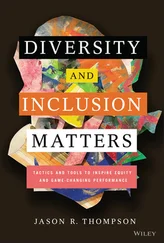This undeniable demand, unfortunately, hasn't translated into impact. Reviewing GEN's national survey data, only 22 percent of employees believe that their employer has publicly stated DEI as a priority and has a clear roadmap for getting there. A 2020 study surveying over 800 HR professionals demonstrated similar findings: 76 percent of companies have no diversity or inclusion goals. 14
As the workforce has changed, most companies' approaches still haven't, and this comes at a great cost.
Invoicing Exclusion: The High Cost of Underestimating Employees
Exclusion carries an amorphous price tag. At best, we can itemize pieces of it. For example, the EEOC estimates it collects $120 million a year in relation to harassment charges, in pre-litigation processes alone. The average harassment claim settled outside of court will typically run an organization between $75,000 and $125,000, 15 and lawsuits resulting from age discrimination have cost companies collectively as much as $250 million. 16 These figures don't include the cases settled privately or the enduring costs of damaged reputations and tarnished brands.
Organizations also lose millions each year to diversity turnover. For example, in technology-related industries, women are twice as likely to leave as men, and Black and Latino workers are 3.5 times more likely to quit than their white or Asian colleagues. 17 Underestimated employees cite “culture” as their top reason for resigning, and businesses pay an annual $16 billion diversity attrition tab.
The full expenses of exclusion extend far beyond litigation and attrition, though. Our most costly mistakes are the ones we're convinced we're not making.
In its early days, tech was seen as a triumphant return to merit-based competition. Unlike their counterparts on Wall Street or in law firms, tech entrepreneurs didn't have to “know someone” to get ahead. A guy with a garage and enough entrepreneurial spirit and grit could bootstrap his own success. The “wild west” of Silicon Valley was rumored to be a new land of equal opportunity, where a competitive work ethic and superior code would determine who rose to the top.
Today on this supposedly level playing field, women represent only about 11 percent of developers. 18 The computer science departments at California Polytechnic and North Carolina State University wanted to understand why. Do women underperform their male peers that badly? Does the sector need to do a better job of marketing to women? Is it just a pipeline problem?
A deep dive into GitHub revealed some answers. 19 This 12-million-person open-source coding community allows members to make and respond to public requests for code for programming projects. This massive exchange provided the opportunity for researchers to observe how gender played a role in coding interactions. They found that code written by women was approved at a higher rate than code written by men. Women's coding acceptance rates dominated men's in the top ten programming languages.
There was one important catch: This trend only applied if women kept their gender a secret.
When female developers publicly displayed their gender, their code acceptance rate was lower than men's. While women may have been producing more competent code than men, their contributions were less likely to be accepted if their gender was known.
Even when we believe we've created objective digital meritocracies, bias left unchecked sabotages our access to excellence.
The Best Person for the Job
“I don't hire for diversity. I just hire the best person for the job.”
I hear this “best person for the job” objection to diversity initiatives most often in fields that tend to think of themselves as meritocracies. The tech industry isn't alone in its perception of itself as meritocratic, but it does give us a good example of how this belief plays out.
In a (since deleted) article in Forbes , tech industry commentator Brian S. Hall declared, “If you aren't able to make it here [Silicon Valley], it's almost certainly not because of any bias.” Anyone claiming bias, he argued, should blame their own “refusal to put in the hard work.” 20
It appears that bias may play a bigger role than Hall realized. A 2012 randomized, double-blind study found that when hiring managers in STEM fields were given application materials of a fictitious candidate randomly assigned a male or female name, both male and female hiring managers rated the male applicant as significantly more competent and hirable than the woman with identical application materials. 21 A similar 2014 study found that both men and women working in tech fields were twice as likely to hire a man for a job that required math, even when presented with female applicants who were equally qualified. 22
The “pipeline problem” is a common excuse used to explain away the underrepresentation of tech workers of color. The numbers tell a different story. According to a USA Today study, Black and Hispanic computer science and computer engineering students graduate from top universities at three times the rate that top tech companies hire them. 23 Even when Black and Hispanic graduates each made up 9 percent of computer science degrees earned, the sector continued to hire only 2 percent Black and 3 percent Hispanic tech workers.
If they do manage to get hired, underestimated employees face promotion processes that are framed as meritocratic, but actually lead to biased outcomes. Many tech companies have jettisoned long-standing traditions of managers choosing who gets promoted. Instead, they've embraced a more crowd-sourced approach: Those who self-nominate and receive the most peer accolades are chosen to advance.
As we learned in the previous chapter, when women and minorities advocate for themselves, they can disrupt unconscious expectations of how they should behave, triggering negative reactions from their peers. The self-nominating phase of the tech promotions process puts these employees in a double bind. They can self-nominate and risk retaliation, or say nothing and risk being passed over for promotions.
The second stage of the promotion process—peer approval—triggers in-group favoritism, an implicit bias in which people are more likely to support others who remind them of themselves. In the largely white and male world of tech, this phenomenon scales to a widespread advantage for other white men.
The inherently biased dynamics of self-nomination and peer approval put underestimated groups at a disadvantage. Returning decision-making power to the masses may have been seen as promoting fairness and performance-based competition, but it has actually tilted the playing field in favor of bias, not merit.
Tech isn't the only industry suffering from this mismatch of meritocratic beliefs and favoritism-fueled outcomes. Across the US we treasure the idea that we are a meritocracy, and this belief that we reward people for their efforts and abilities actually keeps us from hiring the “best person for the job.”
Pay-for-performance schemes are supposed to foster workplace meritocracies. To study how they actually play out in organizations, MIT's Sloan School of Management observed a 9,000-employee service sector company that had implemented a “merit-driven compensation system.” This employer emphatically communicated to all their employees that they were implementing this program to ensure workers were rewarded equitably, based on their performance.
The study revealed counter-meritocratic outcomes: Women, ethnic minorities, and employees born outside the US received smaller increases in compensation for the same performance scores as those made by white men. These findings controlled for whether or not employees held similar jobs, worked in the same units, and had the same supervisors. Women, minorities, and those not born in the US had to “work harder and obtain higher performance scores than white men to receive similar salary increases.”
Читать дальше












